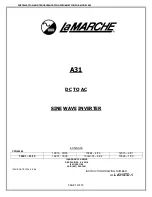
we end up with a very good reproduction of our original
analog audio signal. The math involved can get complicated,
but you don’t need to know that part to enjoy digital audio.
The Basics
How often we take a measurement is known as the
sample rate
. The sample rate for standard CDs is 44.1 kHz,
which means that each channel on a CD stores 44,100
measurements for each second of digital audio, and the
math tells us that means we can store frequencies up to
about 21 kHz (which most people agree is about as high as
we can hear).
How many digits we allow for each measurement, which
determines how accurately we can store each value, is called
the
bit depth
. The bit depth used by standard CD audio is
16 bits (which means 16 digits in binary). The math there
tells us that a CD can store information accurately enough to
give us a dynamic range of about 90 dB, which means that
the loudest sound we can store is about 90 dB louder than
the noise floor.
Those two numbers are usually written together, so a CD is
“16/44” - or sometimes “44/16”. If we want to store higher
frequencies, we can use a higher sample rate and, if we need
more dynamic range, we can use a higher bit depth.
While the CD specification requires CDs to store digital audio
at 44/16, digital audio files are available in several bit depths
and a wide range of sample rates.






































